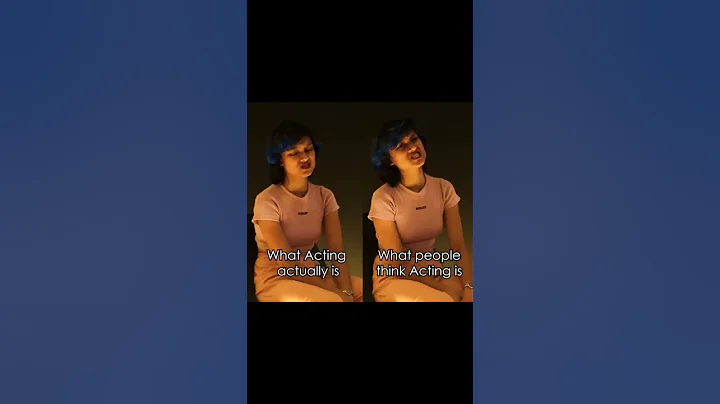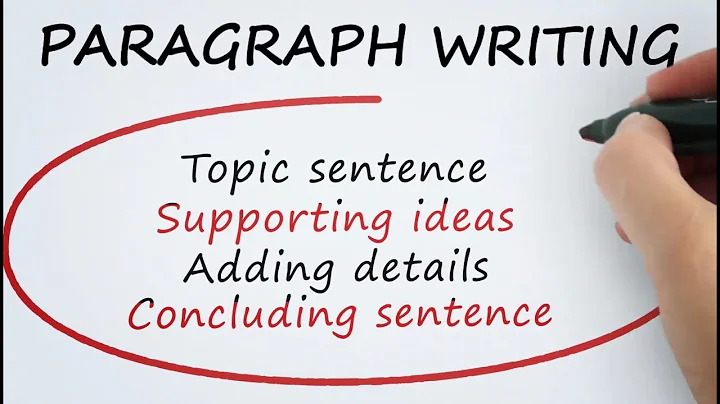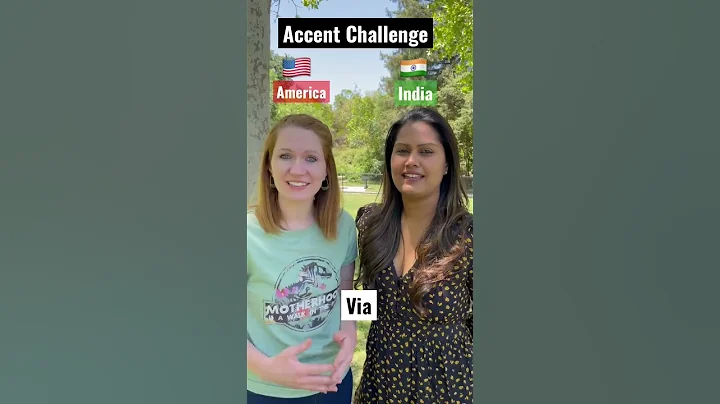Documentation ability is a key ability for academic writing. In a sense, whether to use literature is an important indicator of the difference between academic writing and other types of writing. Beginners who have just entered the field of academic research often start by searching for literature, reviewing literature, and standardizing literature citations. In fact, the documentation ability of academic writing is a comprehensive manifestation of a set of abilities. It is not only related to basic academic norms and ethics, but also reflects the level of a scholar's knowledge. A typical indicator is that the references of doctoral dissertations are often in units of hundreds; while the references of undergraduate dissertations generally only have a few to more than a dozen.

You need first-hand literature, not second-hand literature
Any material that can be used for argumentation can be generally called literature. (1) Documents not only exist on HowNet , in addition to journal articles, dissertations, conference papers, research monographs, news reports, industry reports, field notes, archival materials, biographical literature, statistical reports, and even pre-Qin museums Bamboo slips, meditation Buddha statues with inscriptions on them, and documentaries about the Chernobyl nuclear power plant accident can all become documents for research. Researchers should expand their horizons in using literature.
The literature can be generally divided into three categories: primary literature, second-hand literature and N-hand literature. Primary documents are the most original data and materials, such as field notes, archival materials, statistical reports, bamboo slips inscriptions, etc., which can all be classified as primary documents. Secondary literature is material that has been academically processed, including journal articles, dissertations, conference papers and research monographs. When doing research, you should try your best to use primary documents in order to create original academic articles; classic secondary documents must also be used, and the author must have a dialogue with the existing academic community, otherwise it is easy to work behind closed doors and become arrogant.
But when doing research, avoid using N-hand literature. The so-called N-hand documents refer to documents whose source is unknown, or data, words, and fragments randomly found on the Internet. In order to write a high-scoring essay, some college entrance examination candidates often go to Baidu's "100 Famous Quotes" and then memorize it mechanically and intersperse it in their own articles. This is a very bad writing habit and goes against the basics of document citation. Academic Norms. On the one hand, famous quotes that are separated from the specific context are likely to be taken out of context and misinterpret the author's original words; what's more, they are completely fabricated. For example, after the Lu Xun Museum in Beijing opened a complete retrieval system for Lu Xun's works, netizens discovered that Lu Xun had never said many of the so-called famous quotes that had been attributed to Mr. Lu Xun at all .
Don’t just say that filling academic gaps
The documentation ability of academic writing is the synthesis of a set of abilities. This group of abilities usually includes: literature retrieval ability, literature screening ability, literature review ability and literature application ability. When talking about the literature of academic writing, what is generally emphasized are literature review, standard citation of literature and dialogue with literature, while retrieval and screening of literature are generally ignored. But in fact, retrieval ability and screening ability are the prerequisites for literature review and literature application. Many beginners cannot write academic articles well. It is not that they cannot review the literature they have obtained, but that they have not found the key literature at all.
might as well expose the family scandal and share the author’s personal examples. The author's doctoral thesis topic is the study of cross-cultural communication between traditional Chinese medicine and Ayurvedic medicine. Ayurveda is a traditional medicine popular in the South Asian subcontinent. Its rise can be traced back to the Vedic civilization period in ancient India, and is older than the emergence of traditional Chinese medicine (if it is marked by the separation of pre-Qin witch doctors). Centuries earlier. Before starting the doctoral thesis, the author searched the keyword "Ayurveda" on CNKI and found only a few related academic articles; and then searched for "Ayurveda" + "TCM/TCM" and found none.Although the author refrained from bragging about "filling the academic gap" when opening the topic, in fact, I was always secretly happy because I thought I had created a certain research field. After opening the topic, as the research deepened, the author felt increasingly blushing. It turns out that as early as the 1950s, a group of people (such as Ji Xianlin , Jin Kemu ) were studying Ayurveda; this research was interrupted after the mid-to-late 1960s, and reappeared after the millennium. Such as , Liao Yuqun, , Chen Ming and other scholars’ research monographs, and research after the millennium pays more attention to the interaction between Ayurvedic medicine and exotic medicine. So why didn’t the author see these documents when opening the topic?
The problem lies in the search keywords. The keyword Ayurveda used by the author is the conventional translation when the media reports on South Asian traditional medicine. When scholars studied it in the 1950s, they used the terms Life Veda (Ayurveda is Sanskrit , Ayur means life, and Veda is Veda), Vedic medicine, South Asian traditional medicine (ancient) Indian traditional medicine, Indian medicine and other expressions; after a millennium, Mr. Liao Yuqun, the former director of the Institute of Natural Science History of the Chinese Academy of Sciences, wrote the first monograph on Ayurveda, and his translation was Ayurveda; Chen Ming, a master of South Asian studies at Peking University The teacher's monograph on the exchanges between ancient and ancient medicine, "Medieval Medicine and Foreign Culture," uses traditional Chinese characters. Such rich research materials have not been included in the author's doctoral proposal report. This lesson is profound, and it has also become a key lecture in the writing class that the author now teaches.
The "snowball" method can be used to filter documents
When retrieving documents, diversified search keywords must be used, and you cannot "hang" on a tree. At the same time, the database searched by cannot only be CNKI. For Chinese, Duxiu database covers book resources not included in CNKI. It is also recommended for new generation researchers ; . English databases (such as EBSCO, Proquest, Taylor & Francis, Web of Science), you should also explore . In addition, combined with specific topic selection directions, professional databases are also sources of high-quality documents (especially primary documents). For example, in my writing class on the theme of "Newspaper", the recommended professional databases include People's Daily database, China's important newspaper full-text database, China's modern newspaper full-text database, Dacheng modern newspaper database, and modern Chinese newspapers "Ta Kung Pao: 1902" -1949). Huike News Database, Factiva Database, etc.
retrieved the documents, because not all the documents are correct, credible, and have research reference value for the author. In the writing class I teach, the theme of the first week is literature, and a short essay of about 3,000 words is required at the end of the fourth week. Students often complain that CNKI retrieves 40 documents related to their chosen topic. , 50 pages, hundreds of articles, and you can’t even read them all. How to write an article? This actually tests your ability to filter documents, and spend your limited time on the highest quality documents, academic writing. Only by doing so can you get twice the result with half the effort.
How to filter documents? It mainly combines machine screening and manual screening. General databases, such as CNKI, can filter out the journal sources (such as Peking University Core or CSSC). A batch of low-quality literature. If the author finds the researchers, research journals or research institutions that are crucial to the topic selection through basic research, he can also accurately search for the authors, journals and author institutions, etc., and obtain more referential information. Literature. General databases also have quantitative indicators for measuring papers such as citations and downloads. These data are also the basis for screening literature. For humanities and social science literature, if the citation data can reach double digits or more, They are all relatively classic articles.
When manually screening literature, you can use the "snowball" method . When you find a highly cited article, you can first check whether the author has published more than one article in the related field. Article, if it is, there is a high probability that the author is an authority in this field.Then the relevant documents he/she publishes have the value of further research. More importantly, the author's article also has references. Since he/she is an authority in this field, his/her references will most likely be high-quality literature. From these references, you may be able to find another research authority in a related field. The snowball will get bigger and bigger, and more and more good literature will be searched.
The essence of literature screening ability is the ability to appreciate literature, which is not achieved overnight. Researchers who pursue academic writing should target several key journals and key authors in their own research fields. Once new works are published, they should read them in a timely manner to accumulate them. There are also some journals, which are positioned to screen and disseminate high-quality literature, such as "National People's Congress Copy Materials", " Xinhua Digest ", etc. If beginners can't find their own research direction, read these selected journals. You can also be inspired by the high-quality articles.
Literature review is not about keeping a running account
Beginners of academic writing, it is best to start with the literature review. The School of Journalism and Communication at Tsinghua University is a compulsory course "Historical Theory and Methods of Journalism and Communication" for first-year Ph.D. freshmen. The final assignment has always been a classic literature review; an important part of the qualifying examination for doctoral students in Tsinghua University's School of Journalism and Communication is the open book The exam also involves writing a literature review based on a given topic.
Doing a literature review has many meanings, such as avoiding repetitive work, accurately positioning the research, discovering possible innovations in the research, reflecting the professional quality of the author of the article, etc. In short, academia is a community. If a certain research field wants to develop in depth, future generations must stand on the shoulders of their predecessors. Therefore, it is an inevitable institutional arrangement to understand the status of existing research and determine the direction of progress, that is, to conduct a literature review before starting formal research.
Literature review generally includes two types. One is a narrative literature review, which is common in dissertations or academic monographs. This kind of literature review prepares the author for subsequent research. The other is an evaluative literature review, that is, the literature review itself is the research carried out by the author.
Narrative literature review is the more common type of literature review. Although this kind of literature review is "narrative", it does not mean that the author only needs to "narrate" what the existing literature has done. The literature review should not be made into a running account. The whole article cannot be about what Zhang San did, what Li Si did, and what Wang Wu did. Instead, these documents must be organically combined to find research clues in related fields, or even outline a picture of related fields. The research picture makes the research status clear at a glance.
There are many kinds of logic for document combination. The more classic logic is the logic of time and space. As the author mentioned in his doctoral thesis, the research on Ayurveda by Chinese scholars shows a U-shaped publication pattern in time. There were more studies in the 1950s, 1960s and after the millennium, and almost no research was done in the 1970s to 1990s. It is blank, which is related to the political situation at home and abroad and China-India relations. On the basis of the logic of time or space, a more detailed classification and review of the literature is needed. For example, in the article "Mediated Reality and the Crisis of Science - A Review of Domestic and Foreign Research on Vaccination and Media Reports", the author divided the research related to vaccination and media reports into public health and disease control researchers based on the different identities of the researchers. One group and one group of news communication researchers. Among a group of public health and disease control researchers, the KAP model (Knowledge-Belief and Action) is the most leading research. The impact of vaccine-mediated events on the public's willingness to vaccinate and vaccination behavior is the most important research content, and the public is often included in the research. Vaccination hesitancy or vaccine trust crisis are attributed to inaccurate media reports; among a group of news communication researchers, it was proposed that the reality of mediaization and the dilemma of news ethics are the main entry points for news communication researchers to explain media reporting behavior. Therefore, a problem was discovered when comparing the two - disease control experts and media experts each spoke their own words; in this intersecting field, there are no articles by public health scholars and communication scholars.This provides a strong foundation for the author's proposal to use the theoretical framework of risk communication to promote dialogue between experts, the media, and the public. Nowadays, most databases also have built-in bibliographic statistics and visual analysis modules. Researchers can also combine some bibliometric statistical results to more accurately classify and describe relevant documents.
As mentioned above, it is not difficult to find that A valuable literature review must meet at least the following three points: First, master, screen, and effectively read the research literature in the relevant field as comprehensively as possible, especially to find key authors and key documents. ; Second, classify and analyze the documents according to a certain logic (time, space, research objects, research topics, theoretical models, research methods, etc.), which should best reflect the inheritance relationship, dialogue relationship, and Refuting relationships, etc.; Thirdly, when reviewing existing literature research, the author also needs to establish his or her own opinions, often focusing on blind spots, vague points or controversial points in existing literature research, and putting forward further research suggestions. For dissertations, further research suggestions often correspond to the topic selection and subsequent specific research; for journal articles, further research suggestions often have the value of leading relevant academic development and can be used as a reference for the academic community.
From documents to articles: from chaos to order
In academic writing, the application of documents cannot just be in the literature review part. Some students write their dissertations. In addition to the literature review in the introduction, the subsequent research and analysis part, and even the discussion sublimation part at the end, are all their own expressions without any dialogue with the literature. This is actually done behind closed doors. Research in academia and one’s own research are two different things.
In academic writing, the application of documents should run through the entire writing process. generally has two application scenarios: first, the literature itself is the material of the research, the flesh and blood of the article and the key to the argument. Such documents are usually the primary documents mentioned above. For example, for research articles using fieldwork methods, primary documents such as interview data and research notes obtained from fieldwork are the most important materials for writing. These materials must be organically combined according to the theoretical framework adopted by the author. For another example, historical research articles, primary documents such as historical archives, materials or books, are the flesh and blood of the article. The research opinions and research conclusions obtained by the author are all based on the crawling, reading and analysis of these primary documents. basically.
The second scenario is more common, which is the dialogue with literature while writing. This type of literature usually corresponds to the secondary literature mentioned above, especially some classic literature and key literature discovered during the literature review. When talking to these classic and key documents, there are three different ways of dialogue: reference, refutation, and innovation.
Borrowing is the most common . It may be borrowing from a certain theory or academic concept in the conception of the entire article; it may also be borrowing from some classic studies, cases or expressions in part of the article to strengthen the argument for one's own views. . For example, when Yang Nianqun wrote the book "Spatial Politics under the Conflict between Traditional Chinese and Western Medicine (1832-1985)", he made it clear at the outset that using "reconstructed patients" to reinterpret the history of modern China was based on Tsinghua University Jing Jun, professor of the Department of Sociology at the university, talks about the word temple and Susan Sontag's "Metaphor of Disease". "Patient" is a metaphorical expression, and the process of "patient" being observed, transformed and cured , which is the process of modern China finding its own development path.
No matter whether the literature is a classic or not, it is not a golden rule. Proposing refutations of classic documents through research is also a kind of literature dialogue..For example, Mr. He Zhaowu, a well-known historian, published a classic article "A False Problem in Historical Research" in 1989. In this article, Mr. He believed that " Why did China's feudal society stagnate for a long time?" It is a meaningless fake question in itself. China's feudal society only lasted longer than Europe. Therefore, we cannot say that China has long-term stagnation. In this regard, the new generation of researchers put forward their own refutation. Wang Xuedian believes that regardless of whether this question is a fake question or not, the historians have made rich academic achievements such as the periodization of ancient Chinese history around the long-standing phenomenon of China's feudal society. "Children must not be involved when throwing dirty water." Throw away”. Zhou Xiangsen further believes that the most critical thing in historical research is problem awareness. He believes that Mr. He "proposed the distinction between scientific components and non-scientific or artistic components in history based on the principle of falsification, and then divided this The general application of this principle to distinguishing the true or false of historical issues is actually the result of unconditionally and uncritically accepting the Karl Popper philosophy of science thought." After discussion, the academic community has a deeper understanding of this issue.
Innovation is a more important way of document dialogue, and innovation is the greatest value of academic writing. The so-called innovation is to propose innovative research viewpoints or research hypotheses based on a comprehensive grasp of existing literature. This viewpoint or hypothesis is not water without a source or a tree without roots. Existing literature is the basis for academic innovation. A typical example is "Sending Doctors to the Rural Areas: The Politics of Disease in Modern China" written by Hu Yi. This book was largely inspired by Yang Nianqun's "Reinventing the Patient", which combines disease, history and politics. Contacted. But what is innovative is that Hu Yi clearly put forward the concept of "disease politics", and he found that the distinctive feature of modern China, whether it is road selection or institutional arrangements, is the emphasis on rural areas, such as Chen Zhiqian's "Dingxian Model" , the barefoot doctor system after the founding of the People's Republic of China, the policy of uniting traditional Chinese and Western medicine, and the patriotic health movement, etc. He believes that only by truly sending medicine and health to the countryside can the relationship between the country and the people be optimal.
No matter it is. Whether to use primary documents as the basic material for writing, or to draw on, refute, and innovatively apply classic secondary documents in specific discussions, the process from documents to articles is a process from chaos to order. "What is order?" , is probably the most important mental work and intellectual output of academic writing. Usually when doing academic writing, the time spent reading documents and researching ideas is much longer than the time actually writing. The author may have read hundreds of documents, but in the end, only ten percent of the documents read may be actually applied to the writing of the article. Just one of them. Exactly which documents are to be used, how these documents are distributed in an article, how to strengthen the author's argument and the persuasiveness of the article, the effort is spent beyond coding. The process from documents to articles is a bit like a jigsaw puzzle. The scattered fragments must be organically integrated to form a picture that expresses the meaning; the difference is that the jigsaw puzzle has pictures for reference, while in academic writing, pictures may It is not a priori, but requires the researcher to conceive and outline it, and then follow the diagram to integrate the literature and research materials into an article.
Beginners of academic writing should understand this point from the first day of writing. Any sentence in your writing, as long as it is not your own original work, should be accurately marked with its source. For this reason, beginners should develop good document organization habits and promptly save the electronic documents they have read. In the case of paper books, they can also take photos of relevant statements and save them. Do not use non-academic peer-reviewed materials such as Wikipedia , Baidu Encyclopedia, Guoke, Douban , etc. If you have not read the relevant literature, it is not easy to copy and paste the references from other people's research and treat it as your own literature.





















